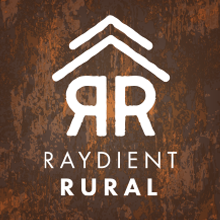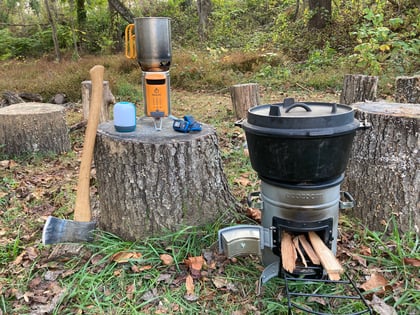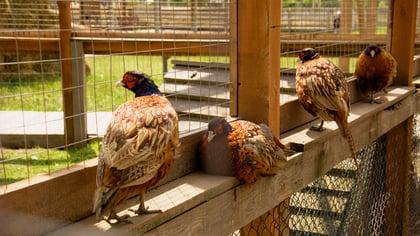Understanding Country Septic Systems [Complete Guide]

As Kentucky farmwife Catherine Pond found out, understanding the basics of country septic systems is essential for landowners, aspiring landowners and country homeowners. Here, she shares everything you need to know about septic systems —from their history and types to preventive maintenance strategies.A few summers ago, on the farm, we had what every country homeowner dreads: a backed-up inlet line into our septic system.
We also realized that the tank hadn’t been pumped of solids since before we purchased the property in 2009. In fact, we weren’t even sure where it was, but had a vague idea of the general area.
If, like us, you need to increase your septic system IQ, this article can help with everything you could ever want to know about rural septic systems and maintenance basics.
What Exactly Is A Septic System?
In rural settings, where municipal sewer lines are often unavailable or impractical, septic systems serve as the backbone of household wastewater management. These decentralized systems treat and dispose of sewage on-site.
If you’re not on a town or city source system, all wastewater and “solids”— from kitchen to bathrooms to laundry —drain into a large tank in the ground. From there, liquids pass through a leach field where they are eventually dissolved into the soil.
Unlike urban areas connected to centralized treatment plants, country properties rely on these self-contained units to handle everything from toilet flushes to kitchen sink drainage. Rural septic systems play a crucial role in public health and environmental protection.
A Brief History and Evolution of Septic Systems
The concept of septic systems dates back to ancient civilizations, but modern iterations trace their roots to 19th-century France.
In 1860, inventor Jean-Louis Mouras developed the first septic tank by combining clay pipes with a concrete chamber that allowed natural bacteria to break down waste. This anaerobic process — where bacteria decompose solids without oxygen — formed the foundation of today’s systems.
By the early 20th century, septic tanks had spread to the United States, initially made of concrete or steel, and became widespread in rural areas by the 1940s as indoor plumbing grew.
Over time, designs evolved to include baffles for better waste retention and drain fields for effluent dispersal.
Post-World War II suburban expansion accelerated adoption, but environmental concerns in the 1970s led to stricter regulations under the Clean Water Act. Today, advancements incorporate aerobic treatment and smart monitoring, reflecting a shift toward sustainability in rural wastewater management.
How Septic Systems Work
A typical septic system consists of two main components: the septic tank and the drain field (also called a leach field).
field).
Wastewater from the home flows into the underground tank, where solids settle at the bottom as sludge, and lighter materials like oils form a scum layer on top.
Beneficial bacteria break down the organic matter, converting it into liquid effluent.
Baffles prevent solids from escaping, ensuring only clarified effluent exits to the drain field.
In the drain field, perforated pipes distribute the effluent into gravel-filled trenches, where soil microbes further filter and treat it before it percolates into the groundwater.
This natural process is ideal for rural areas with ample land and suitable soil, but it requires proper siting to avoid contamination of wells or surface water.
Systems in country settings must account for factors like high water tables or rocky terrain, which can complicate installation.
Related reading: What Land Owners Need To Know About Installing Septic Systems
Types of Septic Systems for Rural Use
Several types of septic systems suit rural environments, each tailored to site conditions.
Conventional gravity systems, the most common and like ours, rely on natural flow and cost-effective design for well-draining soils.
For properties with high water tables, mound systems elevate the drain field above ground using sand and gravel, though they are pricier at $10,000 to $20,000.
Aerobic treatment units (ATUs) introduce oxygen to enhance bacterial breakdown, producing cleaner effluent suitable for sensitive areas; they’re increasingly popular in eco-conscious rural communities.
Alternative systems like drip irrigation or constructed wetlands offer flexibility for challenging soils but require more maintenance.
Choosing the right type depends on soil tests, local regulations and property size.
Septic System Installation Costs in 2025
Installing a septic system in rural areas can be a significant investment, with costs varying by type, size, and location.
Labor accounts for 50-70% of expenses, often $1,500 to $4,000, while permits and engineering fees add $700 to $2,000.
In remote country locales, additional factors like excavation in rocky soil or long access roads can push prices higher. For instance, a mound system might exceed $15,000.
Homeowners should budget for soil percolation tests ($200-$500) and potential well relocation if needed.
Federal grants or low-interest loans may be available for low-income rural areas through programs like USDA Rural Development.
 A mound system being installed.
A mound system being installed.
Maintenance Tips for Longevity
Proper maintenance is key to avoiding costly failures in country septic systems.
Conservatively, the EPA recommends inspecting tanks every 1-3 years and pumping every 3-5 years, depending on household size and usage.
Use water efficiently by fixing leaks and spacing out laundry loads to prevent overload. Avoid flushing non-biodegradables like wipes, grease or chemicals, as they disrupt bacterial balance.
In rural settings, divert rainwater from drain fields and avoid parking heavy vehicles over the system.
Use septic-safe cleaners and consider adding yeast monthly to boost bacteria.
Regular effluent filter cleaning and landscaping with shallow-rooted plants also help. Professional services, costing $250-$500 per pump, are essential for system health.
Common Septic System Problems and Solutions
Rural septic systems face unique challenges like extreme weather and soil variability.
Common issues include clogs from grease or roots, leading to backups.
Solutions involve enzymatic cleaners or root barriers. Overflow from overuse or flooding can be mitigated by conserving water and elevating systems in flood-prone areas.
Tank leaks or drain field failure — often due to compaction or age — require professional repairs, potentially costing thousands.
Ground movement in rural terrains exacerbates cracks; regular inspections prevent escalation. For older systems, extending laterals or upgrading to ATUs can resolve persistent problems.
Environmental Impact of Septic Systems
While effective, poorly maintained septic systems pose environmental risks in rural areas. Leaking effluent can contaminate groundwater with nutrients and pathogens, leading to algal blooms in nearby water bodies.
Well-managed systems minimize impacts by naturally filtering wastewater.
Eco-friendly trends, such as green septic systems that use aerobic processes, reduce pollutants and support biodiversity.
Regulations aim to protect habitats by restricting systems near wildlife areas.
Future Trends in Septic System Technology
Looking ahead, septic technology is evolving toward smarter, greener solutions. Smart monitoring systems with sensors alert homeowners to issues via apps, preventing failures.
Eco-friendly innovations, including PFAS destruction and water reuse, address environmental concerns.
Patent trends show advances in nutrient removal and modular designs for rural adaptability. Climate-resilient options like elevated mounds will become standard in flood-vulnerable country areas.
Tips for Septic System Maintenance

- When you purchase a country property, find out where your septic tank and leach field are, as well as the septic, or inlet, pipeline from the house
- If you can’t find it, but have a vague idea like we did, hopefully your septic maintenance person will also be able to dowse (see NOTE)
- For a large family, have your septic tank pumped every 3-4 years—but no more than five—and for a smaller family (2-4 in the household regularly), you could probably go upwards of 5-10
- Don’t toss anything in the toilet aside from toilet paper — and make a sign for visitors if you must
- Don’t put grease, fat, or any liquid down the drain that will potentially solidify in your pipes
- Use non-toxic cleaning products that will not disrupt beneficial bacteria that help with filtration and breaking down solids
- Pour a nontoxic cleaner and solvent down all drains and toilets every few months
- Take a photo of where your septic tank opening and inlet pipe are — that you can key with captions—for future reference!
Related reading: Get Ready to Ditch and Switch! A Step-By-Step Guide to Detoxifying Your Country Home
Final Thoughts On Country Septic Systems
Country septic systems are vital for rural living, offering independence from urban infrastructure while demanding diligent care.
By understanding their mechanics, investing in proper installation and embracing emerging technologies, homeowners can ensure reliable, eco-friendly wastewater management.
As rural populations grow and climate challenges potentially intensify, these systems will continue to adapt, safeguarding both health and the environment for generations to come.
*A Brief Note on Dowsing
Dowsing is an old and somewhat mysterious practice of finding underground water. Also referred to as “water witching” or “divining,” water dowsers walk along the ground with two metal rods that will cross when they find water.
However, not all people can dowse and not everyone believes in it.
Fortunately, our septic person—Bobby Adkins of Somerset, Kentucky— can, which really helped solve our septic problem!











Your email address will not be published. Required fields are marked*